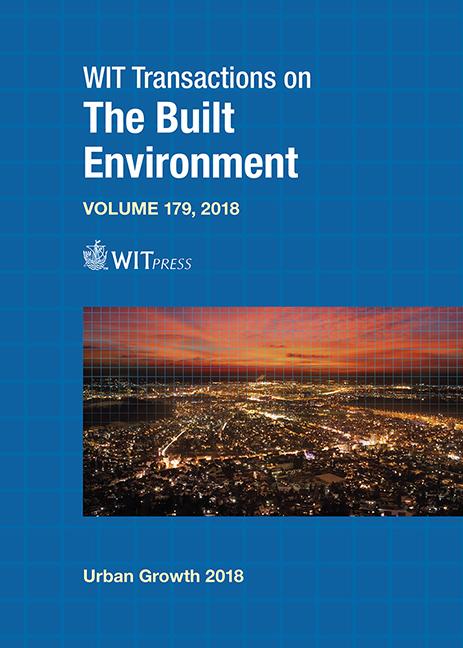ENVIRONMENTAL DESIGN AND PLANNING STRATEGIES TO MITIGATE WASTE CONDITION IN NIGHTLIFE ZONES: THE CASE OF REEPERBAHN STREET, HAMBURG, GERMANY
Price
Free (open access)
Transaction
Volume
179
Pages
11
Page Range
281 - 291
Published
2018
Size
693 kb
Paper DOI
10.2495/UG180261
Copyright
WIT Press
Author(s)
NASIMEH FALLAHRANJBAR, HSIAO-HUI CHEN, UDO DIETRICH
Abstract
Areas with nightlife activities carry high social density and lack of surveillance. Inappropriate waste disposal is one of the negative results triggered by an overcrowded and unorganized public space. This paper aims to propose strategies to improve waste management problems in nightlife areas by investigating Reeperbahn, a touristic area in Hamburg, which sees high volume of plastic cup waste, inappropriate waste disposal, lack of urban furniture and a chaotic sidewalk space. The main research question is how to turn waste collection into a pleasant experience. The proposed strategies were developed in a student’s project of the master-program of HafenCity University and address three intervention stages that aim to solve the problem by offering alternative options for the user by changing the structure of the environment: 1) Use identity of the location to create local solutions, e.g. a local deposit system to be introduced to reduce waste generation. It is essential to encourage shopping units, bars and people to join in with this system with incentives such as reusable bioplastic cups with a customized design which will be used within the area and can also be sold as souvenirs. 2) Waste collection as an activity that engages users. Installing innovative and interactive litter bins and trash bins/containers that can engage people in a joyful way to dispose of their waste, such as the successful stories in the Olympic Village in London and Disneyland with walking and talking trash bins. 3) Environmental design recommendations, e.g. implementing design tools such as pavement, coloring code and urban furniture towards creating new structures of environment to encourage proper waste disposal behavior. Improving the waste situation in a nightlife zone requires a holistic approach. This paper intends to contribute to the discussion about the importance of users of a place and the public space features. The future studies may benefit from the local solutions with use of innovative technologies offered in this research.
Keywords
pro-environmental behavior, interactive innovative, conformity, local pfand, bioplastic





